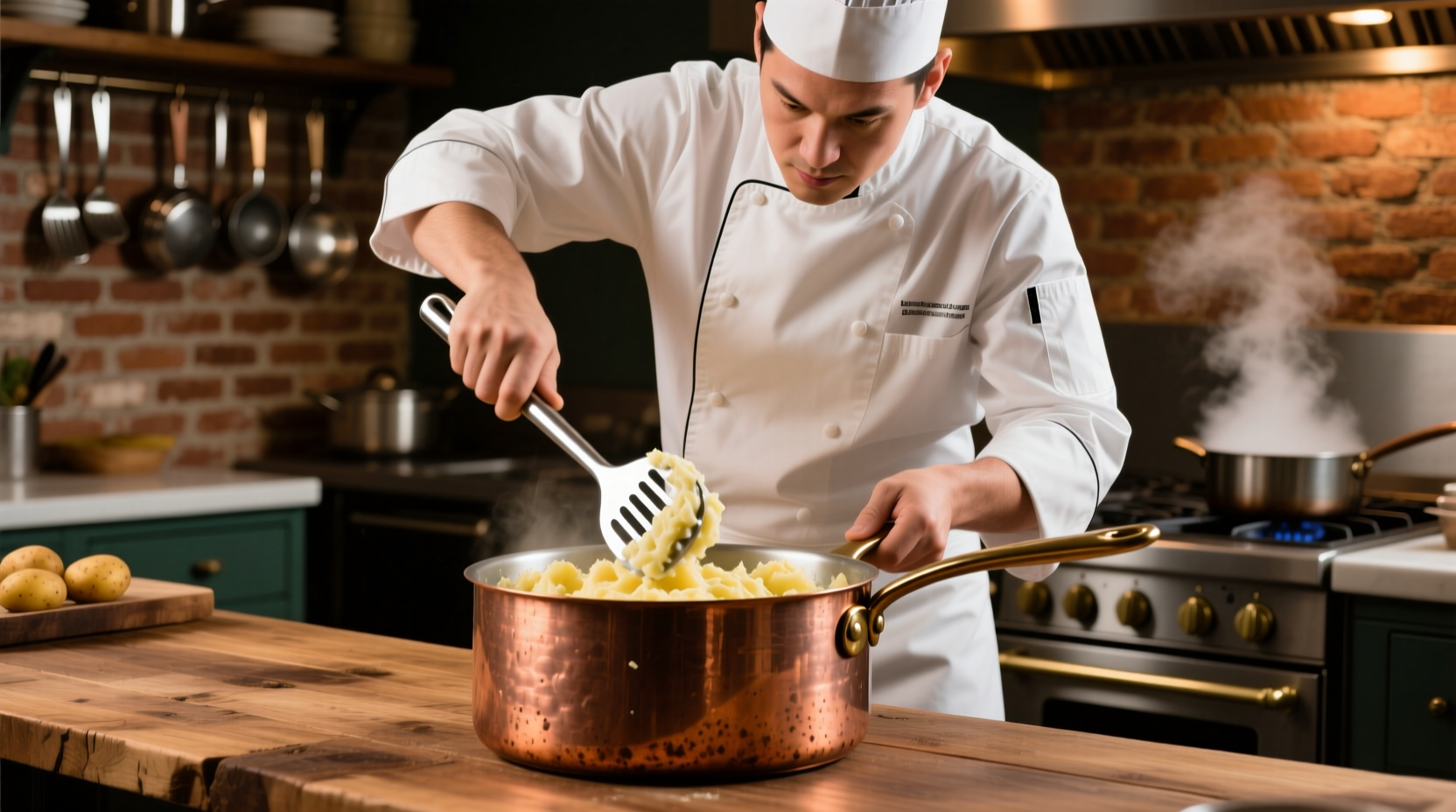Why Your Mashed Potatoes Fail (And How the Right Masher Fixes This)
Most home cooks struggle with mashed potatoes that turn out either lumpy or gummy. The culprit? Using the wrong tool or technique. When you overwork potatoes with electric mixers, you release too much starch, creating a sticky mess. A proper potato masher gives you complete control over texture while maintaining the ideal balance of smoothness and body.
Understanding Potato Masher Types: Finding Your Perfect Match
Not all mashers work the same. The design impacts how potatoes break down and how much effort you need. Let's examine the key variations:
| Masher Type | Best For | Texture Result | Effort Required |
|---|---|---|---|
| Traditional Wire Loop | All-purpose mashing | Smooth with slight texture | Moderate |
| Flat Plate with Holes | Large batches, russet potatoes | Very smooth | Low |
| Ridge-Style (Ricer Alternative) | Creamy, restaurant-style potatoes | Ultra-smooth | High |
| Silicone-Headed | Non-stick pots, delicate mix-ins | Light and fluffy | Low-Moderate |
The Evolution of Potato Mashers: From Wood to Modern Designs
Potato mashers have evolved significantly since their introduction following potatoes' arrival in Europe. Early versions were simple wooden paddles used in cast iron pots. By the 19th century, metal wire designs emerged as cast iron cookware improved. The USDA's Agricultural Research Service notes that potato consumption increased by 300% between 1800-1900, driving kitchen tool innovation (USDA ARS Historical Timeline).
Modern materials like stainless steel and heat-resistant silicone have transformed mashers from single-purpose tools to versatile kitchen essentials. Food science research from the Culinary Institute of America shows that contemporary designs better preserve potato structure while minimizing starch release compared to older models.

The Science Behind Perfect Mashed Potatoes
Understanding potato composition is key to mastering mashing. Potatoes contain two starch types: amylose (which makes potatoes sticky when overworked) and amylopectin (which creates smooth texture). Cornell University's Food Science Department explains that proper mashing technique breaks cell walls just enough to release amylopectin while minimizing amylose exposure (Cornell Food Science Research).
Temperature matters significantly. Potatoes mashed below 140°F (60°C) won't release enough starch for proper binding, while those above 180°F (82°C) release too much, creating gluey results. The ideal mashing window is 150-160°F (65-71°C).
Step-by-Step: Mastering the Mashing Technique
Follow this professional method for perfect results every time:
- Choose the right potato: Russets for fluffy texture, Yukon Golds for creamy results
- Cook properly: Start in cold water, bring to gentle boil, cook until fork-tender
- Drain thoroughly: Excess water creates soupy potatoes
- Return to warm pot: Residual heat helps dry potatoes slightly
- Add fats first: Butter and warm cream/milk incorporate better
- Mash with downward pressure: Use firm, even strokes without twisting
- Stop at 90% smooth: Small lumps melt as potatoes rest
Context Matters: When Not to Use a Potato Masher
While versatile, potato mashers aren't ideal for every situation. Food safety experts at the National Center for Home Food Preservation warn that mashers shouldn't be used with undercooked potatoes, as incomplete starch gelatinization can cause digestive discomfort (NCHFP Guidelines).
Avoid using mashers for:
- Raw vegetables (ineffective and potentially dangerous)
- Large batches over 3 pounds (consider a food mill instead)
- Adding delicate ingredients like fresh herbs (stir in after mashing)
- Creating completely smooth purees (use a ricer for baby food)
Care and Maintenance: Keeping Your Masher Like New
Proper care extends your masher's life and maintains food safety. Stainless steel models should be washed immediately after use to prevent potato starch from drying and becoming difficult to remove. For wooden-handled mashers, avoid dishwashers which can cause cracking.
Store your masher with the head facing up to prevent deformation of silicone heads. Check for wear annually - replace any masher with bent wires or cracked handles, as these can harbor bacteria in hard-to-clean crevices.
Common Mistakes to Avoid with Potato Mashers
Even experienced cooks make these errors:
- Adding cold dairy first: Causes potatoes to seize up and become lumpy
- Over-mashing: Creates gluey texture through excessive starch release
- Using the wrong potato variety: Waxy potatoes like reds don't mash well
- Washing while hot: Thermal shock can damage certain materials
- Ignoring pot size: Too large a pot makes mashing inefficient











 浙公网安备
33010002000092号
浙公网安备
33010002000092号 浙B2-20120091-4
浙B2-20120091-4